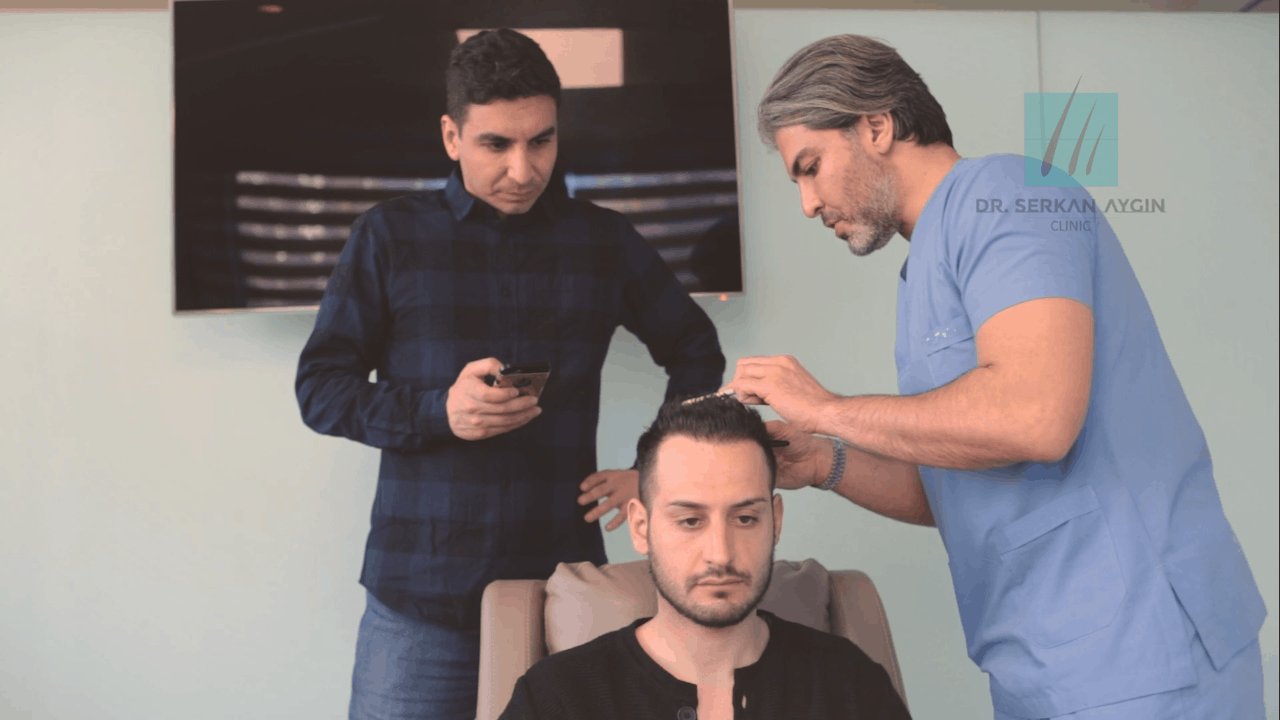
Common questions we are asked at the Dr Serkan Aygin Clinic include: Am I the right candidate for hair transplant in Turkey? Are results guaranteed in my case? While everyone’s results from the transplant procedure will be different, let us examine some important aspects of hair loss and the factors that may make you an ideal candidate for a hair transplant.
Androgenic alopecia, otherwise known as male pattern baldness, affects people at different ages and accounts for 95% of hair loss in men. Roughly two-thirds of men will experience some hair loss by the time they reach the age of 35.
How quickly baldness develops, and the pattern of hair loss, is usually genetic. Your genes affect how sensitive your scalp is to a hormone called dihydrotestosterone (DHT), which shortens the growth phase of your hair by causing hair follicles to shrink.
Hair transplantation is most often the solution for male pattern hair loss, where ‘donor hair’ follicles are transplanted from the back and/or sides of the scalp to thinning areas on the top. The donor hair is taken from these areas because dihydrotestosterone (DHT) does not affect hair in these areas.
Hair loss in women is less likely, but still a prominent issue. About one-third of women experience hair loss (alopecia) at some time in their lives; among postmenopausal women, as many as two-thirds suffer from hair thinning or bald spots. The main type of hair loss in women is the same as it is in men- androgenetic alopecia, or female pattern hair loss. It usually begins around the age of 30, becomes noticeable around the age of 40, and more noticeable after menopause.
In women, androgenetic alopecia begins with gradual thinning at the part line, eventually followed by thinning starting at the top of the head. Unlike men, a woman’s hairline rarely recedes, and women rarely become bald.
While male pattern baldness is usually around the crown of the head, thinning hair in women is more complicated. Reason being, what makes a hair transplant a permanent solution, is that the hair follicles to be transplanted from the donor area (usually located at the back and sides of the scalp) are genetically resistant to hair loss. When hair follicles are extracted from these areas and transplanted to the areas that need more coverage, they will remain intact thanks to their bald-resistant properties.
Unfortunately, thinning hair loss patterns in women often extends into the donor region, making it difficult to find an area on the head to extract donor hair follicles from. Women with stable or localized hair loss, however, typically make excellent candidates for surgical hair restoration.
Age: The ideal candidate for a hair transplant procedure is between the ages of 25 and 65 years. Under 25 patients with premature hair loss are not considered good candidates as their hair growth patterns may change as they grow older. If grafts are placed too early, there is a chance they’ll be incorrectly distributed on the head. Similarly, balding patients over the age of 65 years tend to have very thin hair, which could make the transplant results less effective.
Type of Hair Loss: Patients with pattern baldness usually make the best candidates for hair transplants, as their hair loss follows a predictable pattern. Ideally, the person would have been losing hair for more than 5 years, or have progressed to Class 3 or above on the Norwood scale. Patients suffering from other types of hair loss that affect the entire scalp may not be good candidates for a hair transplant, as they likely won’t have enough healthy donor hair follicles.
Classification of Hair Loss: Hair loss can be assessed by the amount of donor hair available and the quality of donor hair. If a patient is almost completely bald, the patient cannot undergo hair transplant surgery. Similarly, if the hair is too fine or weak, it will not survive a transplant procedure.
Hair Density: The number of strands per square inch on the scalp determines a person’s hair density. A higher density means that there is more hair available to be transplanted. If the hair on the donor area of the scalp is already thin, there is not much hair to cultivate.
Hair Type: Hair that is thicker and coarser usually produces better results for hair transplants. Wavy, curly and afro hair is an asset, as it is denser in appearance than straight hair.
Hair Colour: Hair transplant results appear better when the skin colour of the scalp is similar to the hair colour. This disguises any thin areas as the hair follicles begin to grow.
Overall Health: As with any surgery, the patient must be in good overall health before undergoing the procedure. A strong immune system will reduce the risk of complications and improve healing times. Medication like blood thinners can affect the results of surgery, so if you have any long-term health conditions, you must inform your doctor before planning the procedure.
While we can use this information as a basis for understanding your eligibility for a hair transplant, at Dr Serkan Aygin Clinic, we like to assess each patient on an individual basis. To clarify any questions you have about your hair loss condition and to know if you are a good candidate for the procedure please contact us for a consultation, we will be more than happy to assist you.
Images were captured pre-COVID-19